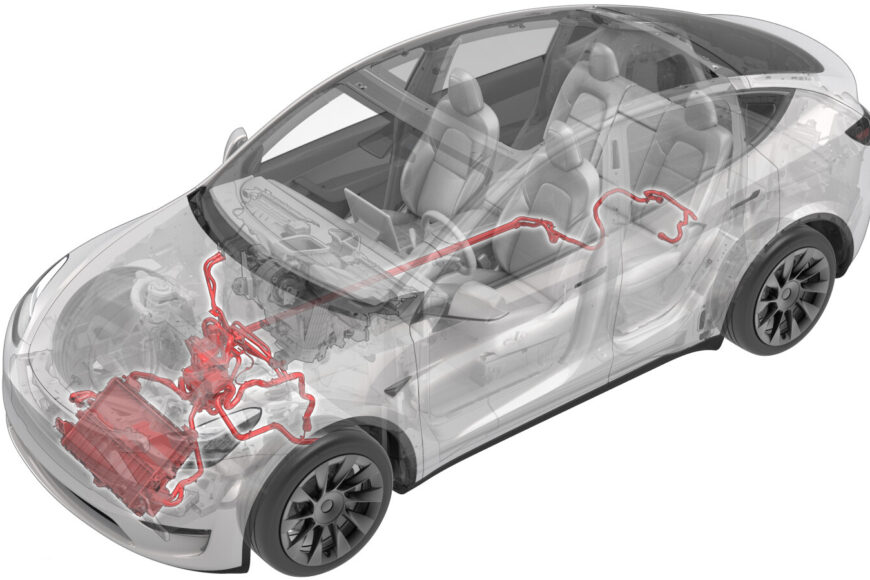
Tesla’s advanced battery systems are among the best in the EV world, but like any high-performance component, they require proper care. One of the most common issues we see at Dynamis Auto is battery overheating — a problem that can affect performance, efficiency, and long-term battery health.
In this article, we’ll break down why Tesla batteries overheat and how to prevent it with proper maintenance and care.
⚠ Why Do Tesla Batteries Overheat?
Tesla uses a liquid-cooled lithium-ion battery system that regulates temperature using a network of coolant loops, pumps, and sensors. However, several factors can cause this system to underperform:
- Coolant Leaks or Low Coolant Levels
Even a minor leak can reduce the battery’s ability to regulate heat, especially under heavy load.
- Faulty Coolant Pump or Valve
A malfunctioning pump or 3-way valve can prevent coolant from circulating properly, leading to localized overheating.
- Blocked Radiator or Cooling Lines
Dust, debris, or internal buildup can reduce the cooling system’s efficiency, especially in dusty or hot climates.
- Aggressive Driving or Frequent Supercharging
Repeated high-load driving or fast charging sessions (especially in hot weather) generate excess heat faster than the system can dissipate it.
- Software or Sensor Errors
Even if the physical system works, faulty temperature sensors or firmware bugs can cause poor thermal management.
Signs Your Tesla Battery May Be Overheating
- Reduced charging speed
- Battery warning lights or alerts
- Unusual fan noise or high cabin temperatures
- Performance limited during driving (Power Limited warning)
- Strong smell from under the hood or battery area
How to Prevent Tesla Battery Overheating
At Dynamis Auto, we recommend the following preventive steps:
- Regular Battery Cooling System Inspections
We check coolant levels, inspect hoses, test pumps, and ensure all components are working properly.
- Replace Faulty Battery Modules or BMS Boards
If heat is localized, we diagnose and replace only the affected modules — saving you money.
- Avoid Extreme Driving on Low Battery
Driving aggressively at low charge can overwork the cooling system.
- Use Scheduled Charging
Let your Tesla cool down before charging and avoid back-to-back Supercharging sessions when possible.
- Stay Up to Date with Software Updates
Tesla regularly improves thermal management via over-the-air updates.
Tesla Battery Repairs in San Jose
If you suspect your Tesla battery is overheating or not performing at its best, book a diagnostic with Dynamis Auto. We specialize in Tesla battery repairs, cooling system diagnostics, and module-level replacements, all performed by experienced EV technicians.
Get back on the road confidently — safely, efficiently, and affordably.
📍 Serving Tesla owners in San Jose and the Bay Area
Looking for expert Tesla battery service near you? Trust the team at Dynamis Auto – your local Tesla repair specialists.







1 COMMENT
A Commenter
July 8, 2025, 8:24 pm REPLYThis was super helpful! I had no idea that a faulty coolant valve could cause battery issues. Definitely booking a visit to check my Model 3 — better safe than sorry!